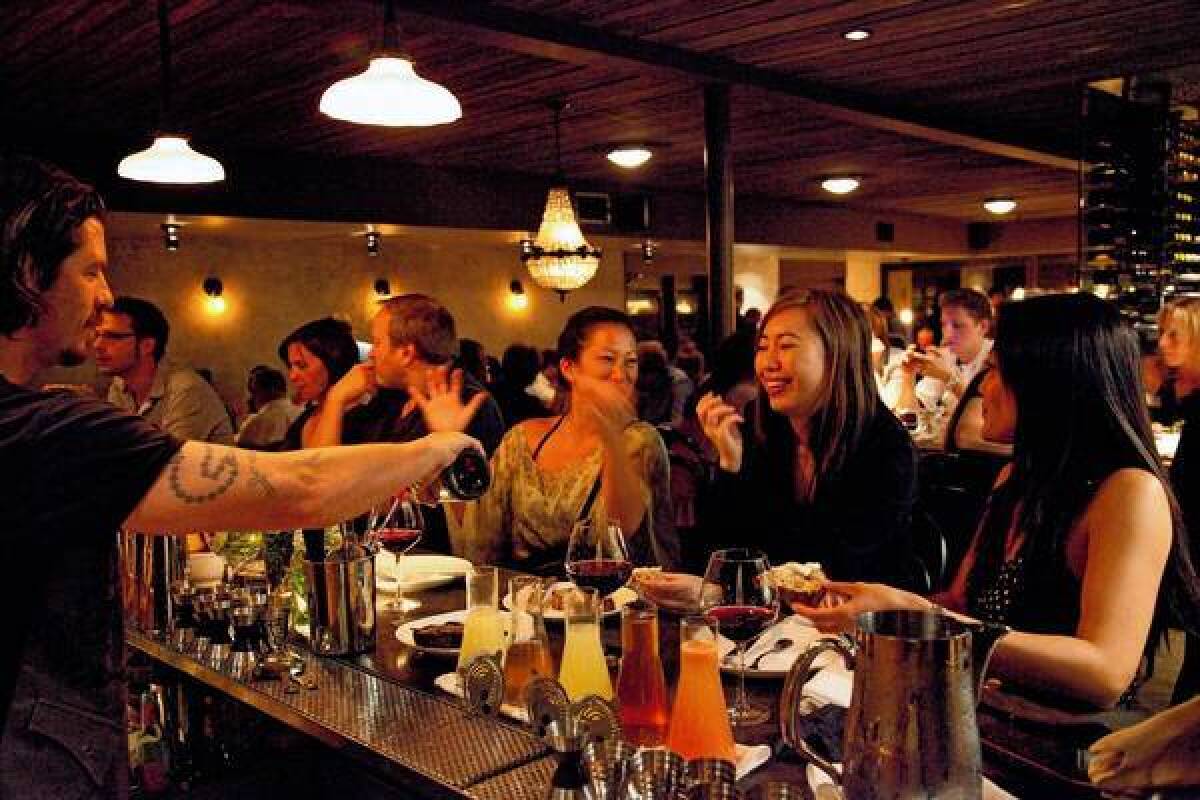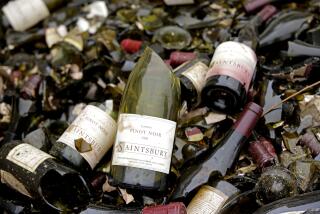How to make sense of the wine list

Give me a wine list, I know what to do. But confronted with a list of unfamiliar craft beers, whether I ask for advice or just randomly pick for myself, too often I end up with something too fruity or too hoppy or over-the-top. That’s because, in terms of beer, I’m a novice, unfamiliar even with the vocabulary used to describe the brews and unable to convincingly convey what it is I do like.
I imagine many restaurant-goers feel equally helpless when handed a wine list. Some people just play it safe and head straight to the Chardonnays and order their favorite label. But what’s the point? Part of the fun of going out is discovering something new.
If the sight of a big complicated wine list, or any wine list at all, has you quaking in your boots, you’re not alone. How to make sense of it all? Here are a few ideas:
• First rule of thumb: Take your time. Don’t rush into anything. If your dining companion can’t wait to throw some wine down, order him or her a glass of wine while you take your time looking over the list. Get a feeling for the sensibility of the person who created the list, for his or her palate and enthusiasms. I used to love it at two- and three-star restaurants in France when you’d be ushered into the lounge, handed the wine list and menu and a glass of Champagne so you could decide on wine and food at your leisure.
• Look for wines that you already know and love, not to order them necessarily, but to get a reading on the sommelier’s palate. If you see a number of your favorite bottles, that’s the green light to take a chance on something you don’t know. Wine publicist and former retailer Dan Fredman says that if he can tell some thought has gone into a list, he’s more likely to order an unfamiliar bottle. “Quite often something unknown is going to be a better value than a familiar label. The restaurant won’t mark it up as much.”
• The best way to understand how wines are priced is to look up a wine you’ve bought before. A typical markup is 2 to 21/2 times retail, sometimes more. Generally, the pricier the bottle, the lower the markup, but unless you’ve got the budget to buy higher end Barolo or Bordeaux or California Cabernet, that’s pretty much a moot point. You want to find that sweet spot where you get the best bang for the buck — and a wine you’ll be thrilled to drink.
• In general, unless you want to taste a number of different wines, don’t order wine by the glass — the markup is much higher. (Wine bars are a different case; I’m talking about restaurants here.) It’s inevitable you’ll want another glass, and at that point, a bottle would have been a much better deal. Wines by the carafe and half-bottles are usually a good bet too.
• If the sommelier or whoever put the wine list together is working the floor, talk to him or her. Try to communicate what you like. But to do that, cautions former sommelier and Mission Wines owner Chris Meeske, “it’s important for consumers to try and remember the wines that they’ve had in the past. You have to try and articulate the experience you want to have and hope the sommelier will come up with an appropriate bottle.”
• Be prepared to tell the sommelier (and the world) what you’re willing to spend. You can just come right out and say you’re looking for something for less than $50. Or you can be more subtle and ask the sommelier about a couple of different wines at your price point and hope he or she takes the hint. But there is absolutely nothing embarrassing about asking what is interesting in the $30 range. A good sommelier will be thrilled to show off the latest little Loire Valley white or Central Coast garagiste red.
• Don’t be afraid to tell the sommelier if you don’t like a wine. Sometimes he or she will take the bottle back and sell it off by the glass. If you’re interested in trying something outside your comfort zone, your server might offer you a small taste beforehand. More often than not, it turns out to be a wine that you can appreciate.
• It’s fun to splurge occasionally on a tasting menu and let the sommelier do the pairings course by course. Christopher Miller at Spago is particularly adept at choosing brilliant matches for Wolfgang Puck’s dishes. Keep an eye out too for wine dinners where one producer’s wines are poured with a menu designed around them.
Even wine professionals are learning all the time. The wine landscape has changed so much in recent years, as importers ferret out new and never-before-exported producers from lesser-known regions, that it’s hard keeping up. Meeske admits, “I’ll go to a cool new hip spot with a young sommelier ready to introduce the world to what they’re fired up about and encounter a list where I don’t recognize a single wine. The hipper the list, the more esoteric it is. And that’s always great — you may be introduced to a whole new world.”
More to Read
Eat your way across L.A.
Get our weekly Tasting Notes newsletter for reviews, news and more.
You may occasionally receive promotional content from the Los Angeles Times.






